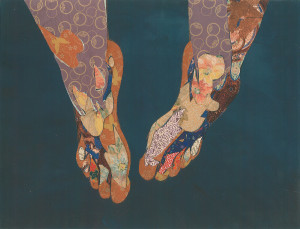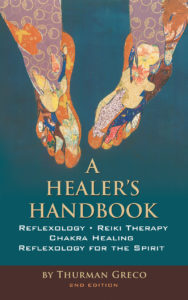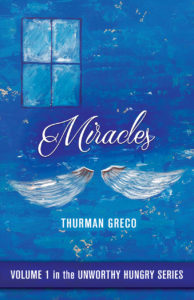What is Reflexology for the Spirit?
 Reflexology for the Spirit works with reflex points (nerve endings) in the hands, feet, and ears corresponding to specific areas throughout the body. This book deals with the feet only, but the reflex points are also in the hands and ears (we leave these for the subject of another book). It’s a system which, when applied, may help many existing health conditions.
Reflexology for the Spirit works with reflex points (nerve endings) in the hands, feet, and ears corresponding to specific areas throughout the body. This book deals with the feet only, but the reflex points are also in the hands and ears (we leave these for the subject of another book). It’s a system which, when applied, may help many existing health conditions.
These reflex points offer a map which is both easy to read and use. The left side of the body is reflected in the left foot and the right side of the body is reflected in the right foot.
Reflexology for the Spirit is a natural whole body modality, so many people find they have an aptitude for this hands-on work.
We’re dealing with the energy links and systems of which our bodies are made. Students are often surprised at how logical the reflexology system is: the brain is read as a reflection in the toes, the lower spine is in the heel. The internal organs are in the spaces in between. This is exciting stuff.
The first place a disease or imbalance can be detected and subsequently treated is in the feet. Reflexology for the Spirit practitioners often detect ailments, problems, and diseases before they manifest symptoms anywhere else in the body. These are described as crystals, resistance, mushiness, emptiness, hollows, etc. They also can be felt through the sensations the client partner experiences.
The next post will complete the opening portion of this chapter. After that, we’ll be discussing specific health issues: allergies, anxieties, MS, stress, to name only a few.
Thanks for reading this post. Please use the comment section for any questions you may have.
Please refer this article to your preferred social media network.
Peace and food for all.
Thurman Greco
Moving Forward to the 1500’s and then to Present Day Reflexology
 Moving to the 1500’s and to Europe, Zone Therapy was introduced. Zone Therapy is a simple way of mapping the foot. The body is divided into ten vertical zones, five on each size of the spinal column as the median line. Reflexologists the world over still use Zone Therapy today.
Moving to the 1500’s and to Europe, Zone Therapy was introduced. Zone Therapy is a simple way of mapping the foot. The body is divided into ten vertical zones, five on each size of the spinal column as the median line. Reflexologists the world over still use Zone Therapy today.
Reflexology changed quite a bit in the 20th century. In the United States, a physician, Dr. William Fitzgerald, successfully practiced zone Therapy. He applied his techniques to both hands and feet (preferring the hands) to lessen pain for his patients. In 1917, Dr. Fitzgerald and Dr. Edwin Bowers co-authored a book about this work.
Dr. Joseph Riley and his wife studied under Dr. Fitzgerald. They’re important in this story because of Eunice Ingham who worked with them. They are the link to Eunice Ingham.
She became a famous reflexologist in Pennsylvania who worked before, during, and after World War II. She limited her practice to foot reflexology because she felt that sensitivity in the feet increased positive treatment results.
From this glorious history, and recent 20th century trail blazers, we now have thousands of people practicing various kinds of reflexology throughout the world. Needless to say, a trip to a library, book store, or an internet search offers the reflexologist a variety of recent materials that will teach and inspire.
Beginning with the next post, we’ll learn about Reflexology for the Spirit: what it is, how it works, how you can use it,
Thank you for reading this blog. Please contact me with any questions you may have.
Thurman Greco
The Actual Beginnings of Reflexology are Shrouded in Mystery
 In this post, we’ll begin to explore the roots of this age old modality.
In this post, we’ll begin to explore the roots of this age old modality.
What we do know is that early history refers to reflexology in China, India, Japan, Egypt, Greece, North Africa, the Arabian Peninsula, the Mediterranean, South America and North America.
Historians tell us that Egyptians practiced both hand and foot reflexology as early as 2500 BC. If you ever travel to Egypt, please visit the burial ground at Saqqara. The Physician’s Tomb there has a famous wall painting showing two people receiving reflexology. One is receiving hand reflexology and the other is receiving foot reflexology. This painting dates back to 2300 BCE.
If you ever visit Japan, be sure to visit the Medicine Teacher Temple in Nara. There you’ll find a stone carving depicting the soles of Buddha’s feet in a carving dating to 790 AD. In Buddhist tradition, the feet (or foot prints) represent his entire being. For centuries after the Buddha’s death, people did not recreate images of the great teacher’s face or body. But, eventually artists began producing images of his feet – representing the whole spiritual being to be revered.
Also, in India there are paintings of Vishnu, the Hindu god’s feet with symbols corresponding to several reflexology points.
By the time these famous wall paintings and carvings came to be a reality, reflexology was already an accepted healing modality in much of the world.
Reflexology has been recorded in ancient Chinese writings describing pressure being applied to fingers and thumbs.
Ayurveda is an ancient Indian form of medicine which is becoming popular in our country. Reflexology is incorporated in Ayurvedic medicine.
In the next blog, I’ll relate recent reflexology history and bring us up to the present.
Thanks for reading this post. Please comment with any questions you have, etc.
Peace and food for all.
Thurman Greco
Five Things You Need to Know About Being a Reflexology for the Spirit Practitioner
Five things you need to know about reflexology that make it a very inviting career:
First, Reflexology for the Spirit, by its very nature, is a low tech career field. Practitioners use their hands, brains, and hearts instead of machines.
Second, generally speaking, a Reflexology for the Spirit practitioner scheduling 25 sessions per week is a full time practitioner.
Third, it’s relatively easy to establish a practice without yellow page ads, billboards, etc. Some practitioners don’t even have business cards. Word of mouth is the best method here. If you like to write, you may offer a short newsletter periodically. But, more on marketing in future posts.
Fourth, Reflexology for the Spirit works well with many other modalities. A practice may be established which includes essential oils, flower remedies, yoga, massage, etc. I have several graduates who have added Reflexology for the Spirit to their yoga practices.
One modality which combines well with Reflexology for the Spirit is Reiki therapy. Reiki therapy is easy to learn, very easy to use with Reflexology for the Spirit, and the client partners love it. It’s a light touch offered to a clothed recipient. You can use Reiki therapy anytime you offer Reflexology for the Spirit.
There are no known contraindications or side effects with Reiki therapy so it can be used on virtually everyone. When combined with Reflexology for the Spirit, Reiki therapy offers a “boost” to the client’s self healing mechanism as the body moves toward homeostasis.
Fifth, If your client partners can be encouraged to eat healthfully and avoid chemicals and toxic elements – mercury, lead, hormones, or antibiotics often found in foods-reflexology sessions can be a lot more effective. If a food has a label you can’t read, pronounce, or understand, it’s not acceptable.
It’s easier for our bodies to get and stay healthy if the foods we eat are clean.
In the next posts, you’ll learn a bit about the glorious history of reflexology along with a description of the benefits, and contraindications.
Thank you for reading about Reflexology for the Spirit.
Please refer this article to your preferred social media network.
Please send a comment.
Don’t forget to join the email list.
Peace and food for all
Thurman Greco







